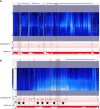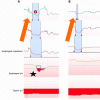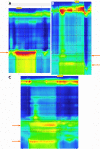Preoperative physiological esophageal assessment for anti-reflux surgery: A guide for surgeons on high-resolution manometry and pH testing
- PMID: 33967555
- PMCID: PMC8072189
- DOI: 10.3748/wjg.v27.i16.1751
Preoperative physiological esophageal assessment for anti-reflux surgery: A guide for surgeons on high-resolution manometry and pH testing
Abstract
Gastroesophageal reflux disease (GERD) is one of the most commonly encountered digestive diseases in the world, with the prevalence continuing to increase. Many patients are successfully treated with lifestyle modifications and proton pump inhibitor therapy, but a subset of patients require more aggressive intervention for control of their symptoms. Surgical treatment with fundoplication is a viable option for patients with GERD, as it attempts to improve the integrity of the lower esophageal sphincter (LES). While surgery can be as effective as medical treatment, it can also be associated with side effects such as dysphagia, bloating, and abdominal pain. Therefore, a thorough pre-operative assessment is crucial to select appropriate surgical candidates. Newer technologies are becoming increasingly available to help clinicians identify patients with true LES dysfunction, such as pH-impedance studies and high-resolution manometry (HRM). Pre-operative evaluation should be aimed at confirming the diagnosis of GERD, ruling out any major motility disorders, and selecting appropriate surgical candidates. HRM and pH testing are key tests to consider for patients with GERD like symptoms, and the addition of provocative measures such as straight leg raises and multiple rapid swallows to HRM protocol can assess the presence of underlying hiatal hernias and to test a patient's peristaltic reserve prior to surgery.
Keywords: Anti-reflux surgery; Fundoplication; Gastroesophageal reflux disease; High resolution manometry; Pre-operative assessment; pH-impedance.
©The Author(s) 2021. Published by Baishideng Publishing Group Inc. All rights reserved.
Conflict of interest statement
Conflict-of-interest statement: The authors disclose no conflicts of interest or external funding for this publication.
Figures












Similar articles
-
Preoperative gastroenterological evaluation for anti-reflux surgery: strengthening surgeon-gastroenterologist collaboration and improving patient selection.Expert Rev Gastroenterol Hepatol. 2025 Sep;19(9):963-972. doi: 10.1080/17474124.2025.2549377. Epub 2025 Aug 19. Expert Rev Gastroenterol Hepatol. 2025. PMID: 40824004 Review.
-
Esophageal manometry in gastroesophageal reflux disease.Gastroenterol Clin North Am. 2014 Mar;43(1):69-87. doi: 10.1016/j.gtc.2013.11.005. Epub 2013 Dec 28. Gastroenterol Clin North Am. 2014. PMID: 24503360 Review.
-
Backflow prevention mechanism of laparoscopic Toupet fundoplication using high-resolution manometry.Surg Endosc. 2016 Jul;30(7):2703-10. doi: 10.1007/s00464-015-4532-z. Epub 2015 Sep 30. Surg Endosc. 2016. PMID: 26423410
-
The Utility of Esophageal Motility Testing in Gastroesophageal Reflux Disease (GERD).Curr Gastroenterol Rep. 2019 Jul 10;21(8):37. doi: 10.1007/s11894-019-0704-7. Curr Gastroenterol Rep. 2019. PMID: 31289922 Review.
-
Impact of reflux esophagitis on the esophageal function before and after laparoscopic fundoplication.Esophagus. 2018 Oct;15(4):224-230. doi: 10.1007/s10388-018-0618-8. Epub 2018 Apr 26. Esophagus. 2018. PMID: 30225739
Cited by
-
Laparoscopic Toupet fundoplication: a safe and effective anti-reflux option in lung transplant recipients.Surg Endosc. 2023 Nov;37(11):8429-8437. doi: 10.1007/s00464-023-10245-0. Epub 2023 Jul 12. Surg Endosc. 2023. PMID: 37438480
-
Novel Technique to Diagnose Gastroesophageal Reflux Disease.Korean J Helicobacter Up Gastrointest Res. 2024 Sep;24(3):208-217. doi: 10.7704/kjhugr.2024.0020. Epub 2024 Sep 9. Korean J Helicobacter Up Gastrointest Res. 2024. PMID: 40502343 Free PMC article. Review.
-
The relationship between intraoperative EndoFLIP™ distensibility index and manometry lower esophageal sphincter basal mean pressure in patients undergoing anti-reflux surgery.Surg Endosc. 2025 Mar;39(3):1996-2003. doi: 10.1007/s00464-025-11572-0. Epub 2025 Jan 30. Surg Endosc. 2025. PMID: 39884992
-
Utilizing Esophageal Motility Tests in Diagnosing and Evaluating Gastroesophageal Reflux Disease.Diagnostics (Basel). 2024 Jul 9;14(14):1467. doi: 10.3390/diagnostics14141467. Diagnostics (Basel). 2024. PMID: 39061603 Free PMC article. Review.
-
Current management of gastro-oesophageal reflux disease-treatment costs, safety profile, and effectiveness: a narrative review.Gastroenterol Rep (Oxf). 2023 Apr 18;11:goad008. doi: 10.1093/gastro/goad008. eCollection 2023. Gastroenterol Rep (Oxf). 2023. PMID: 37082451 Free PMC article. Review.
References
-
- Dent J, Becher A, Sung J, Zou D, Agréus L, Bazzoli F. Systematic review: patterns of reflux-induced symptoms and esophageal endoscopic findings in large-scale surveys. Clin Gastroenterol Hepatol 2012; 10: 863-873. :e3. - PubMed
-
- Patti MG. An Evidence-Based Approach to the Treatment of Gastroesophageal Reflux Disease. JAMA Surg. 2016;151:73–78. - PubMed
-
- Katz PO, Gerson LB, Vela MF. Guidelines for the diagnosis and management of gastroesophageal reflux disease. Am J Gastroenterol. 2013;108:308–28; quiz 329. - PubMed
Publication types
MeSH terms
LinkOut - more resources
Full Text Sources
Other Literature Sources
Medical

